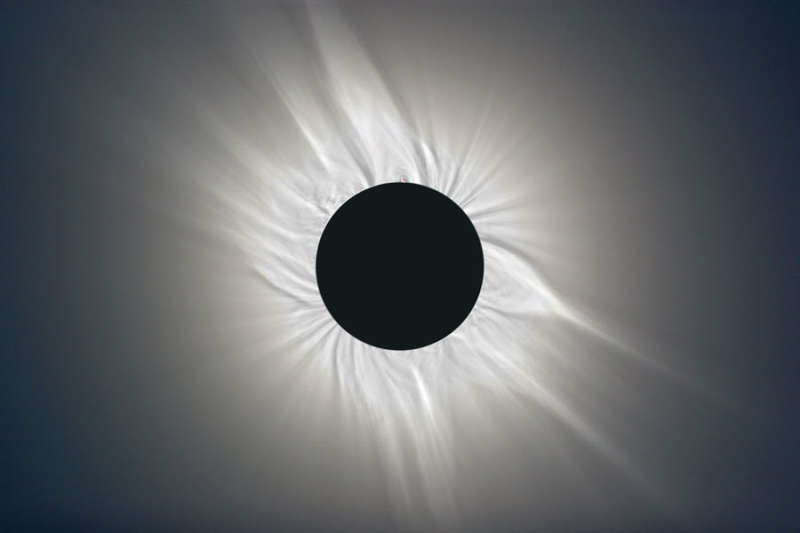Credit & Copyright: Koen van Gorp
Explanation:
Most photographs don't adequately portray the magnificence of the
Sun's corona.
Seeing the
corona first-hand during a total
solar eclipse is best.
The
human eye
can adapt to see features and extent that
photographic film usually cannot.
Welcome, however, to the
digital age.
The
above picture is a combination of thirty-three photographs that
were digitally processed to highlight faint features of a total eclipse that occurred
in March of 2006.
The images of the
Sun's corona were digitally altered to enhance dim,
outlying waves and filaments.
Shadow seekers need not fret, though, since as
yet there is no way that digital image processing can
mimic the fun involved in
experiencing a total solar eclipse.
Last week, a spectacular total
solar eclipse occurred over southern Asia, while the
The next total solar eclipse will be
visible from the
South Pacific
on 2010 July 11.
Note:
An APOD editor will review great space images this Saturday night at Ft. Wilkins,
Michigan.
1999 2000 2001 2002 2003 2004 2005 2006 2007 2008 2009 2010 2011 2012 2013 2014 2015 2016 2017 2018 2019 2020 2021 2022 2023 2024 2025 |
Yanvar' Fevral' Mart Aprel' Mai Iyun' Iyul' Avgust Sentyabr' Oktyabr' Noyabr' Dekabr' |
NASA Web Site Statements, Warnings, and Disclaimers
NASA Official: Jay Norris. Specific rights apply.
A service of: LHEA at NASA / GSFC
& Michigan Tech. U.
|
Publikacii s klyuchevymi slovami:
Sun - total solar eclipse - Solnechnaya korona - Solnce - polnoe zatmenie - polnoe solnechnoe zatmenie
Publikacii so slovami: Sun - total solar eclipse - Solnechnaya korona - Solnce - polnoe zatmenie - polnoe solnechnoe zatmenie | |
Sm. takzhe:
Vse publikacii na tu zhe temu >> | |
